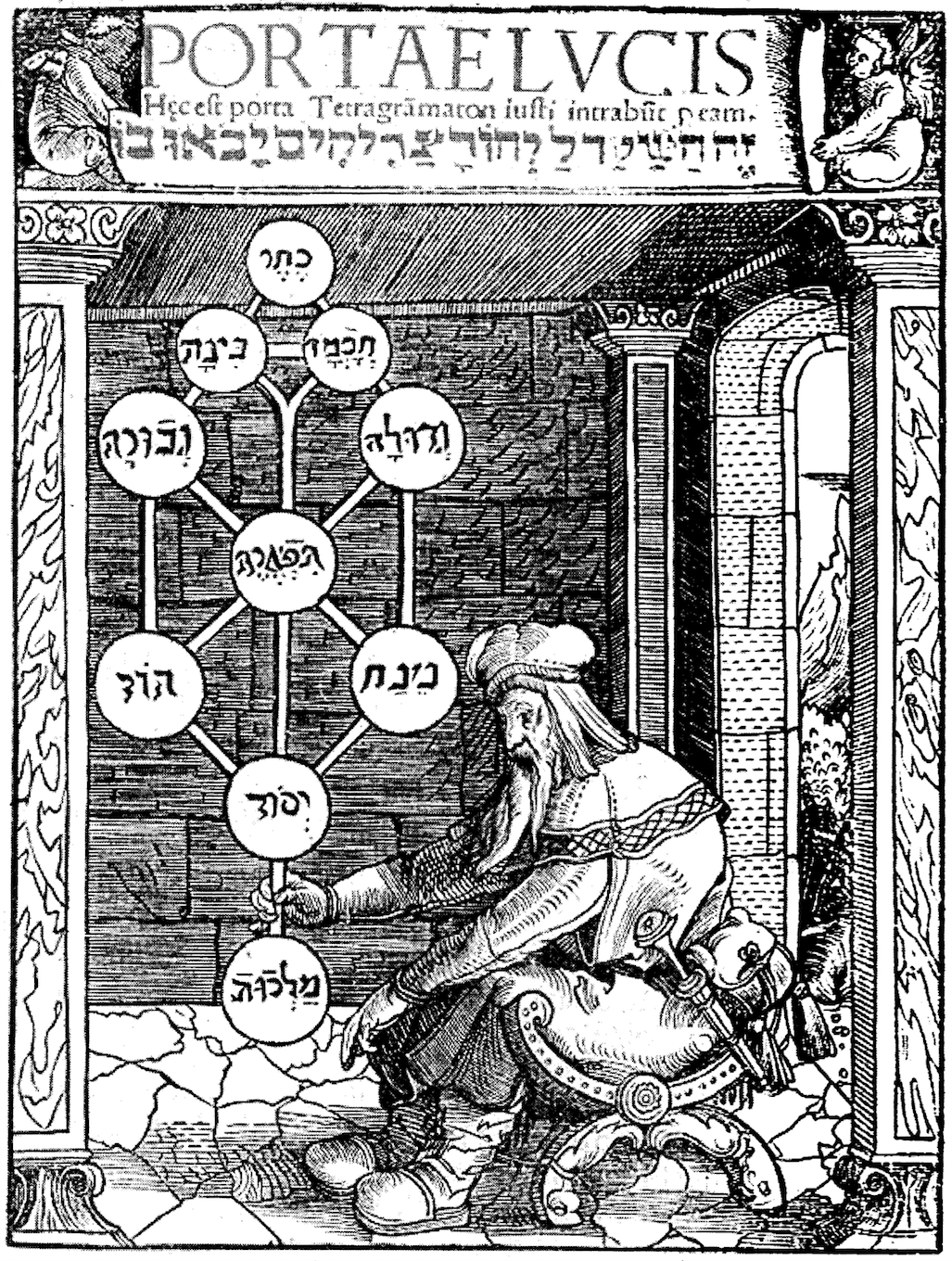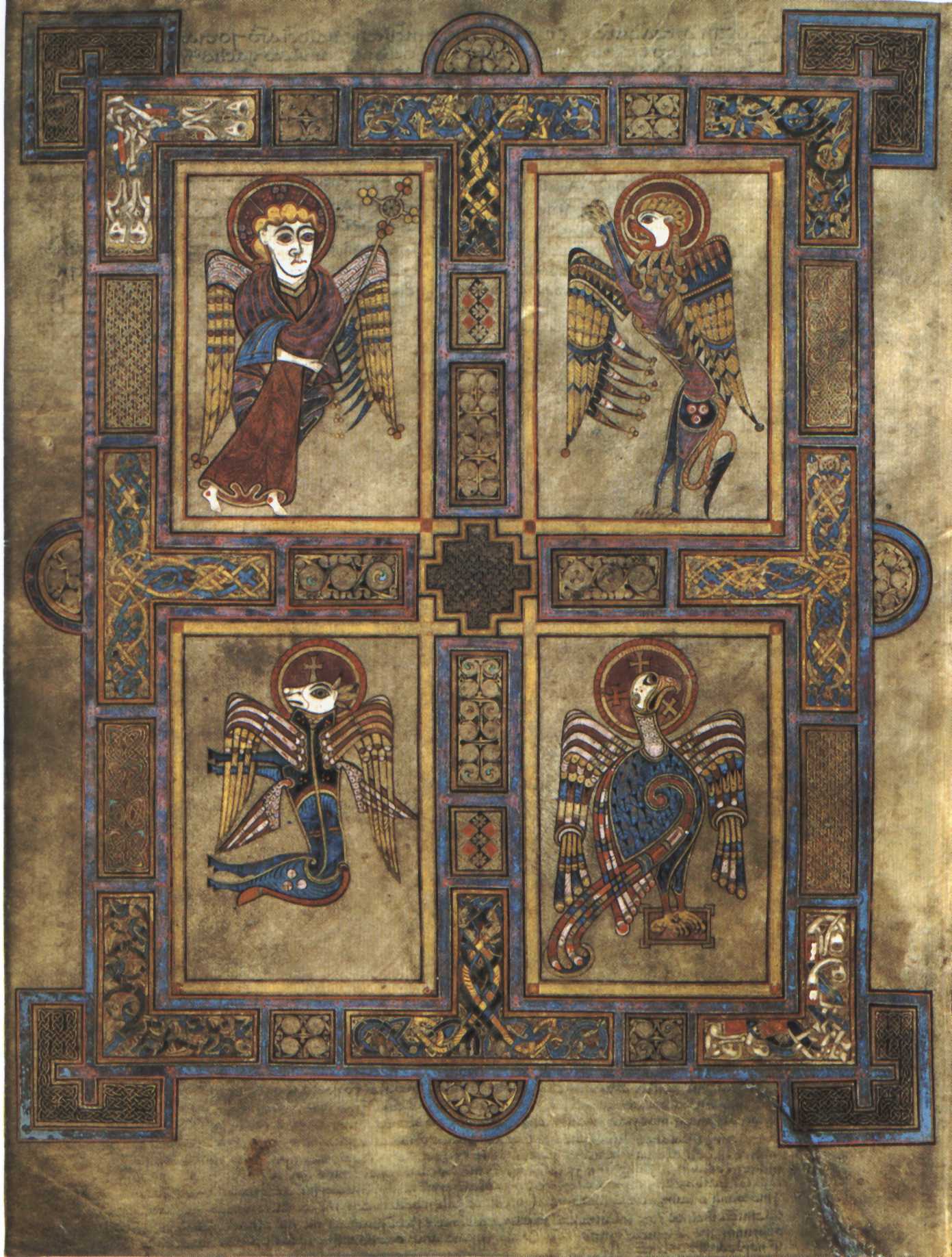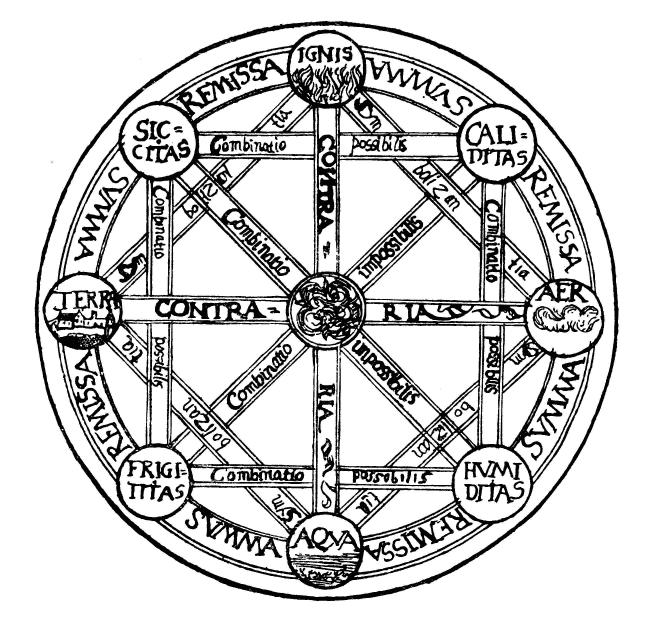|
Hermetic Qabalists
Hermetic Qabalah () is a Western esotericism, Western esoteric tradition involving mysticism and the occult. It is the underlying philosophy and framework for magical societies such as the Hermetic Order of the Golden Dawn, has inspired esoteric Christian organizations such as the Societas Rosicruciana in Anglia, is a key element within the Thelemic orders, and is important to mystical-religious societies such as the Builders of the Adytum and the Fellowship of the Rosy Cross. Hermetic Qabalah arose from Christian Kabbalah, Christian Cabala, which itself was derived from Jewish Kabbalah, during the European Renaissance, becoming variously Esoteric Christianity, Esoteric Christian, non-Christian, or anti-Christian across its different schools in the modern era. It draws on a great many influences, most notably: Kabbalah, Jewish Kabbalah, Western astrology, Alchemy, Paganism, Pagan religions, especially Egyptian and Greco-Roman, Neoplatonism, Hermeticism, and the symbolism of th ... [...More Info...] [...Related Items...] OR: [Wikipedia] [Google] [Baidu] |
Western Esotericism
Western esotericism, also known as the Western mystery tradition, is a wide range of loosely related ideas and movements that developed within Western society. These ideas and currents are united since they are largely distinct both from orthodox Judeo-Christian, Judeo-Christian religion and Age of Enlightenment rationalism. It has influenced, or contributed to, various forms of Western philosophy, mysticism, Western religions, religion, science, pseudoscience, Western art history, art, Western literature, literature, and Western culture#Music, music. The idea of grouping a wide range of Western traditions and philosophies together under the term ''esotericism'' developed in 17th-century Europe. Various academics have debated numerous definitions of Western esotericism. One view adopts a definition from certain esotericist schools of thought themselves, treating "esotericism" as a perennial philosophy, perennial hidden inner tradition. A second perspective sees esotericism as a ... [...More Info...] [...Related Items...] OR: [Wikipedia] [Google] [Baidu] |
Syncretism
Syncretism () is the practice of combining different beliefs and various school of thought, schools of thought. Syncretism involves the merging or religious assimilation, assimilation of several originally discrete traditions, especially in the theology and mythology of religion, thus asserting an underlying unity and allowing for an Inclusivism, inclusive approach to other faiths. While syncretism in art and culture is sometimes likened to eclecticism, in the realm of religion, it specifically denotes a more integrated merging of beliefs into a unified system, distinct from eclecticism, which implies a selective adoption of elements from different traditions without necessarily blending them into a new, cohesive belief system. Etymology The English word is first attested in the early 17th century. It is from Neo-Latin, Modern Latin , drawing on the (), supposedly meaning "Cretan federation". However, this is a spurious etymology derived from the naive idea in Plutarch's 1st- ... [...More Info...] [...Related Items...] OR: [Wikipedia] [Google] [Baidu] |
Metatron
Metatron (Mishnaic Hebrew: ''Meṭāṭrōn''), or Matatron (), is an angel in Judaism, Gnosticism, and Islam. Metatron is mentioned three times in the Talmud, in a few brief passages in the Aggadah, the Targum, and in mystical kabbalah, Kabbalistic texts within Rabbinic literature. The figure forms one of the traces for the presence of Dualism in cosmology, dualist proclivities in Gnosticism and the otherwise monotheistic vision of the Tanakh. In Rabbinic literature, he is sometimes portrayed as serving as the celestial scribe. The name Metatron is not mentioned in the Torah or the Bible, and how the name originated is a matter of debate. In Islamic tradition, he is also known as Mīṭaṭrūn (), the angel of the veil. In Jewish apocrypha, early Kabbalah, and rabbinic literature, ''Metatron'' is the name that Enoch received after his transformation into an angel. Etymology Numerous etymologies have been proposed to account for the name Metatron, but there is no consensus ... [...More Info...] [...Related Items...] OR: [Wikipedia] [Google] [Baidu] |
Living Creatures (Bible)
The living creatures, living beings, or ''chayyoth'' () are a class of heavenly beings in Judaism. They are described in the prophet Ezekiel's vision of the heavenly chariot in the first and tenth chapters of the Book of Ezekiel. References to the sacred creatures recur in texts of Second Temple Judaism, in rabbinical ''merkabah'' ("chariot") literature, in the Book of Revelation in the Christian New Testament, and in the Zohar. According to Judaism, Jewish and Christianity, Christian traditions, there are four living creatures, although their description varies by source. The symbolic depiction of the four living creatures in religious art, especially Christian art, is called a tetramorph. Ezekiel's four living creatures Ezekiel's vision of the four living creatures in Ezekiel 1 are identified as cherubim in Ezekiel 10, who are God's throne bearers. Cherubim as minor Tutelary deity, guardian deities of temple or palace thresholds are known throughout the Ancient East. In Ezek ... [...More Info...] [...Related Items...] OR: [Wikipedia] [Google] [Baidu] |
Jewish Angelic Hierarchy
In Judaism, angels (, plural: ''mal’āḵīm'') are supernatural beings that appear throughout the Tanakh (Hebrew Bible), Rabbinic literature, Jewish apocrypha, Christian pseudepigrapha, Jewish philosophy, Jewish mysticism, and traditional Jewish liturgy as agents of the God of Israel. They are categorized in different hierarchies. Their essence is often associated with fire. The Talmud describes their very essence as fire. Etymology Hebrew ''mal’ākh'' is the standard word for "messenger", both human and divine, in the Hebrew Bible; it is also related to the words for "angel" in Arabic (''malāk'' ), Aramaic and Ethiopic. It is rarely used for human messengers in Modern Hebrew as the latter is usually denoted by the term ''shaliyakh'' (). The noun derives from the verbal consonantal root ''l-’-k'' (), meaning specifically "to send with a message" and with time was substituted with more applicable ''sh-l-h''. In Biblical Hebrew this root is attested only in this noun ... [...More Info...] [...Related Items...] OR: [Wikipedia] [Google] [Baidu] |
Sephirot
Sefirot (; , plural of ), meaning '' emanations'', are the 10 attributes/emanations in Kabbalah, through which Ein Sof ("infinite space") reveals itself and continuously creates both the physical realm and the seder hishtalshelut (the chained descent of the metaphysical Four Worlds). The term is alternatively transliterated into English as ''sephirot/sephiroth'', singular ''sefira/sephirah''. As revelations of the creator's will (, ''rāṣon''), the sefirot should not be understood as ten gods, but rather as ten different channels through which the one God reveals His will. In later Jewish literature, the ten sefirot refer either to the ten manifestations of God; the ten powers or faculties of the soul; or the ten structural forces of nature. Alternative configurations of the sefirot are interpreted by various schools in the historical evolution of Kabbalah, with each articulating differing spiritual aspects. The tradition of enumerating 10 is stated in the ''Sefer Yetzirah ... [...More Info...] [...Related Items...] OR: [Wikipedia] [Google] [Baidu] |
Archangel
Archangels () are the second lowest rank of angel in the Catholic hierarchy of angels, based on and put forward by Pseudo-Dionysius the Areopagite in the 5th or 6th century in his book ''De Coelesti Hierarchia'' (''On the Celestial Hierarchy''). The Bible itself uses the term “archangel” two times referring to the angel Michael only in the New Testament. The Bible does not mention a particular hierarchy of angels in any detail aside from this. The word is usually associated with the Abrahamic religions and many offshoots they are historically associated with. ''Archangel'' is derived from Ancient Greek, Greek (), with the Greek prefix meaning 'chief'. In Catholic theology, archangels constitute the second-lowest rank of angel; much of modernized imaging of Archangels as we have today likely stems from the etymology of their name, as well as their presentation in John Milton's ''Paradise Lost''. In many offshoots of Judaism, with the oldest text coming from Enoch 1, the ... [...More Info...] [...Related Items...] OR: [Wikipedia] [Google] [Baidu] |
Classical Elements
The classical elements typically refer to earth, water, air, fire, and (later) aether which were proposed to explain the nature and complexity of all matter in terms of simpler substances. Ancient cultures in Greece, Angola, Tibet, India, and Mali had similar lists which sometimes referred, in local languages, to "air" as "wind", and to "aether" as "space". These different cultures and even individual philosophers had widely varying explanations concerning their attributes and how they related to observable phenomena as well as cosmology. Sometimes these theories overlapped with mythology and were personified in deities. Some of these interpretations included atomism (the idea of very small, indivisible portions of matter), but other interpretations considered the elements to be divisible into infinitely small pieces without changing their nature. While the classification of the material world in ancient India, Hellenistic Egypt, and ancient Greece into air, earth, fir ... [...More Info...] [...Related Items...] OR: [Wikipedia] [Google] [Baidu] |
Major Arcana
The Major Arcana are the named cards in a cartomantic tarot pack. There are usually 22 such cards in a standard 78-card pack, typically numbered from 0 to 21 (or 1 to 21, with the Fool being left unnumbered). Although the cards correspond to the trump cards of a pack used for playing tarot card games, the term 'Major Arcana' is rarely used by players and is typically associated exclusively with use for divination by occultists. The Major Arcana are complemented by the Minor Arcana—the 56 unnamed cards of the tarot deck, which more directly correspond to the contemporary standard 52-card deck. History Prior to the 17th century, tarot cards were solely used for playing games and the Fool and 21 trumps had simple allegorical or esoteric meaning, mostly originating in elite ideology in the Italian courts of the 15th century when it was invented.. The occult significance began to emerge in the 18th century, when Antoine Court de Gébelin, a Swiss clergyman and Freemason, pu ... [...More Info...] [...Related Items...] OR: [Wikipedia] [Google] [Baidu] |
Jewish Kabbalah
Kabbalah or Qabalah ( ; , ; ) is an esoteric method, discipline and school of thought in Jewish mysticism. It forms the foundation of mystical religious interpretations within Judaism. A traditional Kabbalist is called a Mekubbal (). Jewish Kabbalists originally developed transmissions of the primary texts of Kabbalah within the realm of Jewish tradition and often use classical Jewish scriptures to explain and demonstrate its mystical teachings. Kabbalists hold these teachings to define the inner meaning of both the Hebrew Bible and traditional rabbinic literature and their formerly concealed transmitted dimension, as well as to explain the significance of Jewish religious observances. Historically, Kabbalah emerged from earlier forms of Jewish mysticism, in 12th- to 13th-century al-Andalus (Spain) and in Hakhmei Provence, and was reinterpreted during the Jewish mystical renaissance in 16th-century Ottoman Palestine. The , the foundational text of Kabbalah, was authored i ... [...More Info...] [...Related Items...] OR: [Wikipedia] [Google] [Baidu] |
Sefirot
Sefirot (; , plural of ), meaning '' emanations'', are the 10 attributes/emanations in Kabbalah, through which Ein Sof ("infinite space") reveals itself and continuously creates both the physical realm and the seder hishtalshelut (the chained descent of the metaphysical Four Worlds). The term is alternatively transliterated into English as ''sephirot/sephiroth'', singular ''sefira/sephirah''. As revelations of the creator's will (, ''rāṣon''), the sefirot should not be understood as ten gods, but rather as ten different channels through which the one God reveals His will. In later Jewish literature, the ten sefirot refer either to the ten manifestations of God; the ten powers or faculties of the soul; or the ten structural forces of nature. Alternative configurations of the sefirot are interpreted by various schools in the historical evolution of Kabbalah, with each articulating differing spiritual aspects. The tradition of enumerating 10 is stated in the ''Sefer Yetzirah ... [...More Info...] [...Related Items...] OR: [Wikipedia] [Google] [Baidu] |
Tree Of Life 2009 Large
In botany, a tree is a perennial plant with an elongated stem, or trunk, usually supporting branches and leaves. In some usages, the definition of a tree may be narrower, e.g., including only woody plants with secondary growth, only plants that are usable as lumber, or only plants above a specified height. But wider definitions include taller palms, tree ferns, bananas, and bamboos. Trees are not a monophyletic taxonomic group but consist of a wide variety of plant species that have independently evolved a trunk and branches as a way to tower above other plants to compete for sunlight. The majority of tree species are angiosperms or hardwoods; of the rest, many are gymnosperms or softwoods. Trees tend to be long-lived, some trees reaching several thousand years old. Trees evolved around 400 million years ago, and it is estimated that there are around three trillion mature trees in the world currently. A tree typically has many secondary branches supported clear of ... [...More Info...] [...Related Items...] OR: [Wikipedia] [Google] [Baidu] |








